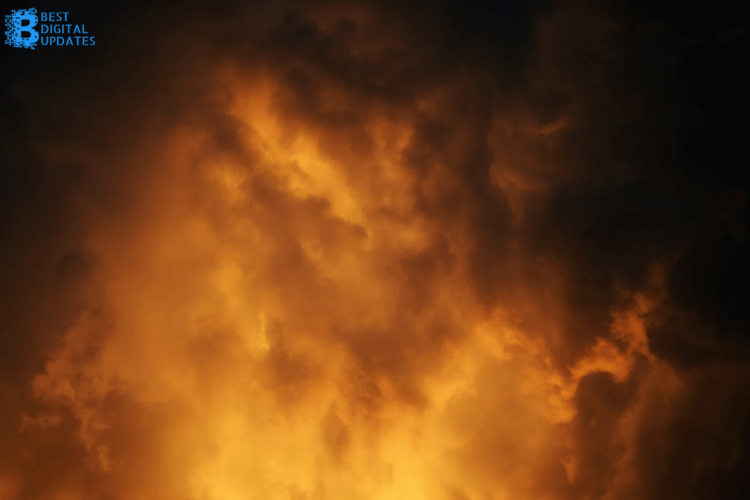Fires are a devastating force that can cause significant damage to property and life. Among the various types of fires, Class B fires, involving flammable liquids such as paint and gasoline, are especially challenging. This is due to their rapid spread and the potential for escalation when not managed correctly.
These fires can significantly damage ecosystems by contaminating soil and water and releasing hazardous chemicals into the atmosphere.
They challenge emergency responders with their intensity and potential scale, demanding specialized equipment and training, often leading to increased risks for firefighters. Let’s explore further.
What Are Class B Fires?
Table of Contents
Class B fires are identified by the presence of flammable liquids or gases such as gasoline, oil, or propane. In industrial environments, these fires are particularly dangerous due to their rapid spread and the potential for explosions.
The flammable materials involved can reignite even after the initial flames are extinguished, making these fires stubborn and difficult to control.
Such fires may originate from improper storage or handling of flammable substances or from equipment malfunctions. They require extinguishers that can remove the oxygen or cool the fuel, like foam, dry powder, or carbon dioxide extinguishers, but never water.
The urgency of correctly identifying and responding to Class B fires cannot be overstated. Given their rapid escalation potential and the severe damage they can inflict in a short span of time.
Effectively Responding to Class B Fires
To effectively respond to Class B fires, one must act with precision and knowledge. The response begins with selecting the appropriate fire extinguisher—foam, dry powder, or carbon dioxide.
As Fire Extinguisher 101 states, water should never be used on Class B flames. This is because it can spread the flammable liquid unpredictably and cause more damage. Chemicals like FM-200 are a good choice but may be swapped for more readily available options.
Dry powder extinguishers interrupt the chemical reaction of the fire, while carbon dioxide extinguishers displace the oxygen and cool down the fuel. Each of these extinguishers is designed to tackle the unique challenges posed by flammable liquids and gases.
However, one of the most effective means of putting out liquid or Class B fires is using AFFF foam. This refers to Aqueous Film Forming Foam, which is often used in military environments where fuel can cause fires.
Unfortunately, their use can be hazardous to health. According to TorHoerman Law, this includes the potential to cause cancer, affect pregnancy, and disturb the immune system.
Many who have used AFFF foam before end up taking legal action, hoping that the AFFF lawsuit settlement amounts can cover healthcare costs.
In fact, there are over 5,983 pending lawsuits against companies that manufacture AFFF foam. These include big-name companies like 3M and DuPont, which have agreed to pay 10.3 billion in settlements.
Handling these types of fires also involves a clear evacuation protocol to ensure safety if the fire cannot be contained. It’s crucial to assess the situation. If the fire is small and manageable with an extinguisher, then an attempt can be made to extinguish the fire.
However, if there’s any doubt about controlling the fire, the priority must shift to evacuating the area immediately and contacting emergency services. Only trained individuals should attempt to tackle Class B fires, as they can escalate quickly and pose significant risks of injury or death.
How To Prevent Class B Fires?
Safety precautions and preparation for handling and storing flammable liquids, key to preventing Class B fires, are governed by stringent guidelines.
Regulations also exist that dictate where certain flammable liquids may be stored—for instance, Class I flammable liquids are banned from basement storage.
Exit routes must comply with the NFPA 101 Life Safety Code, ensuring that paths are unobstructed and of adequate size. At the same time, fire extinguishers should be readily accessible, regularly inspected, and maintained.
According to Orange Country Fire Protection, you want to avoid refueling gasoline-powered equipment when it’s still hot. Likewise, never refuel gasoline in confined spaces, particularly with an open flame in the vicinity. When you need to use gasoline or any flammable liquid, only pour out what you will need.
In flammable liquid storage areas, good housekeeping practices are crucial. Combustible materials are to be kept at bay, containers sealed, and proper bonding and grounding techniques must be employed. These comprehensive safety measures, when rigorously implemented, form the bedrock of effective Class B fire prevention and response strategies.
Conclusion
In grappling with Class B fires, the collective wisdom leans on prevention, preparedness, and proficiency in response. With the knowledge of how to identify, respond, and prevent such fires, we can establish a firm stance against the chaos they can unleash.
Embracing these practices not only safeguards the physical environment but also fortifies a culture of safety and responsibility. The continuous effort to educate, plan, and equip is the cornerstone of fire safety, transforming potential disasters into manageable risks.




















